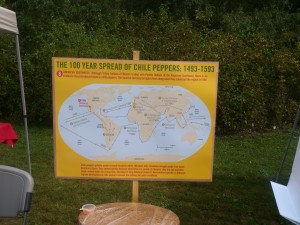After going to the pepper party in the plantations I got to learn a lot more about the chemistry and the history of
pepper. There were many booths there with crafts, activities, posters and food from different cuisines around
the world. For a person like me that has a low tolerance for hot foo, it was a good experience to get to know a little
bit more about pepper.
What I learnt about the chemistry of pepper was that there is a chemical inside pepper called Capsaicin that makes
pepper spicy. Specifically, capsaicin occurs in the fruits of plants in the Capsicum family. Also I learned that before chili
pepper was discovered in South America by Columbus none of the cuisines around the world used chili pepper in
their food. Some of the pepper there had funny names such as fish or lipstick. The degree of hotness of peppers
was measured by the Scoville Heat Scale and the measurements were based on the concentration of the
chemical capsaicin in them. The capsaicin in pepper is what binds with our pain receptors causing a burning sensation. Also,
I learnt that some pepper have smokey or fruity aromas. After going to the pepper party I’m more willing than
before to try more spicy food.


Wow, I never knew that pepper had such an interesting history. I guess my history professor is right, there is a history in everything.
Wow, I did not know what the chemical was called, that is so interesting! The fact that there is a scale of hotness just goes to show how much variance there is in these little peppers. I am amazed that these peppers originated from South America, I had always assumed there were originally some from Asia.